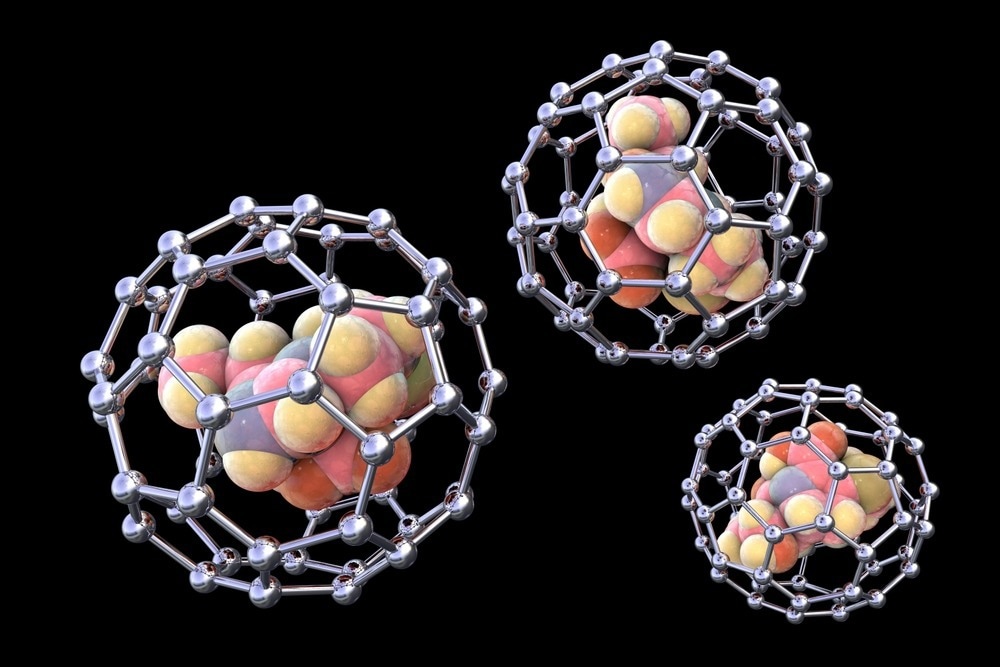Nanoparticles can be used to deliver messenger RNA encoding proteins to the lungs, results of a new study carried out at MIT and the University of Massachusetts Medical School show. With further development, the nanoparticles could be transformed into an inhalable form of treatment for patients with diseases that affect the lungs, such as cystic fibrosis.

Image Credit: Kateryna Kon/Shutterstock.com
Delivering mRNA to the lungs via nanoparticles
The study, published in the journal Nature Biotechnology is the very first to demonstrate the effective delivery of RNA to the lungs in a mouse model. Led by Daniel Anderson, a professor in MIT’s Department of Chemical Engineering and member of MIT’s Koch Institute for Integrative Cancer Research and Institute for Medical Engineering and Science (IMES), the study follows the on from previous work conducted in Anderson’s lab resulted in the development of nanoparticles capable of delivering mRNA encoding to a bioluminescent protein to lung cells. The particles were constructed from polymers, which made them easy to transform into an aerosol for easy inhalation into the lungs. However, work was needed to improve the method.
In the current study, scientists developed lipid nanoparticles, rather than polymer nanoparticles, that could also target the lungs. The team created the particles from molecules containing both a positively charged head group and a long lipid tail. mRNA is negatively charged; therefore, the positively charged head group facilitates interaction between the two, helping the mRNA move out of the cellular structures that envelope the particles once they enter the body. The lipid tail, on the other hand, was included to help move the nanoparticle through the membrane of the engulfing cell. Ten different lipid tails and 72 unique head groups were devised during the study. The team identified the combination that was most likely to reach the lungs via screening.
Delivering to the epithelial cells
Tests in mice demonstrated that the particles they designed were capable of delivering mRNA-encoding CRISPR/Cas9 components to the lung cells. CRISPR/Cas9 is a gene editing technique that acts as a pair of molecular scissors to cut and amend targeted sections of genetic code. By showing that the particles could deliver these components directly to the lungs, it opens up the door to the future development of therapeutic interventions that could tackle lung diseases with gene editing.
In the study, the team used the particles to deliver components to cut out a genetically encoded stop signal; once removed, a gene for fluorescent protein is activated. Therefore, to demonstrate the efficacy of their particles, the team measured the fluorescent signal the cells gave to determine how many of the cells successfully expressed the mRNA. Following one round of delivering the mRNA to the lung cells, roughly 40% of the lung epithelial cells were transfected. After a second round, this increased to over 50%; after a third, it rose to 60%.
In terms of treating lung diseases, the most important cells to target are the club cells and ciliated cells, two forms of epithelial cells. The results showed that roughly 15% of these cells were transfected.
“this means the cells we were able to edit are really the cells of interest for lung disease and will enable us to deliver mRNA to the lung much more efficiently than any other delivery system that has been reported so far.”
Bowen Li, Assistant Professor, University of Toronto
The team is now developing their nanoparticles to make them more stable to create an aerosolized version that can be inhaled. There are also plans to test their nanoparticles in delivering mRNA that could edit the gene that causes cystic fibrosis, and this will be done in a mouse model.
While more development and more studies are needed before the nanoparticles can be tested in humans, the initial results are promising, and there are hopes that it will eventually lead to novel therapeutic approaches to lung diseases.
Sources:
- Combinatorial design of nanoparticles for pulmonary mRNA delivery and genome editing. https://dx.doi.org/10.1038/s41587-023-01679-x
- Rich McManus (2020). Anderson Explains Role of Nanoparticles in Vaccines [online]. NIH Record. Available at: https://nihrecord.nih.gov/2020/09/04/anderson-explains-role-nanoparticles-vaccines (Accessed March 2023)
- Zhang, H. et al. (2020) “Aerosolizable lipid nanoparticles for pulmonary delivery of mrna through design of experiments,” Pharmaceutics, 12(11), p. 1042. Available at: https://doi.org/10.3390/pharmaceutics12111042.